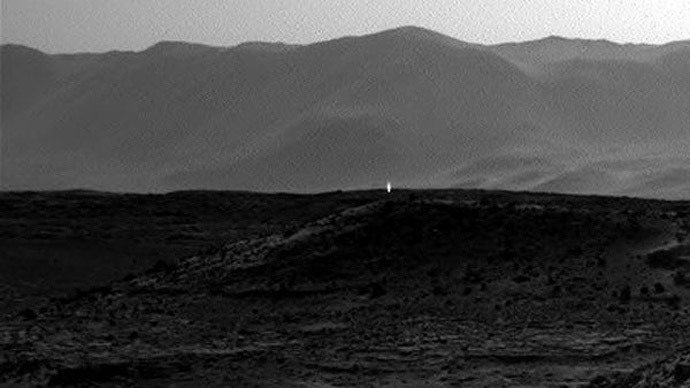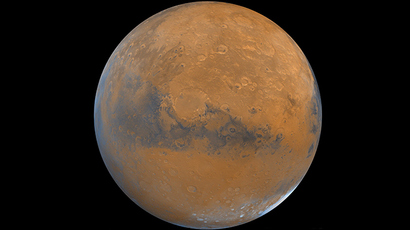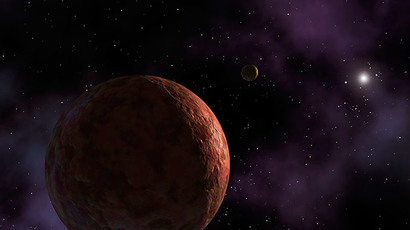NASA offers explanation for Mars mystery light

After a recent photograph of Mars ignited speculation that the Red Planet was home to intelligent life, NASA has come out with several different explanations for the mysterious light captured by the agency’s rover.
As RT reported earlier this week, on April 3 the Curiosity rover managed to take a picture with its right-hand navigation camera that seemed to show a beacon of light emanating from the planet’s surface.
Unfortunately for those excited by the possibility of discovering alien life forms, however, NASA poured some cold water onto the idea.
"One possibility is that the light is the glint from a rock surface reflecting the sun," NASA imaging scientist Justin Maki said to the Houston Chronicle. "When these images were taken each day, the sun was in the same direction as the bright spot, west-northwest from the rover, and relatively low in the sky."
In a statement made to Space.com, Maki added another possibility, that the light could be caused by the way sunlight managed to hit Curiosity’s camera.
"The rover science team is also looking at the possibility that the bright spots could be sunlight reaching the camera's CCD [charge-coupled device] directly through a vent hole in the camera housing, which has happened previously on other cameras on Curiosity and other Mars rovers when the geometry of the incoming sunlight relative to the camera is precisely aligned,” he said.

Finally, Maki also said the light could simply be a cosmic ray hit – something that was suggested previously by Doug Ellison of NASA’s Jet Propulsion Laboratory, who also noted that the image captured by the left-hand navigation camera at the same moment did not contain the light.
Before NASA delivered these possibilities, online bloggers speculated that the light, which did not look natural, was a sign of something much more dramatic than a glint of light from a rock.
"This could indicate there there is intelligent life below the ground and uses light as we do," Scott Waring wrote on his UFO Sightings Daily website about the image. "This is not a glare from the sun, nor is it an artifact of the photo process. Look closely at the bottom of the light. It has a very flat surface giving us 100% indication it is from the surface.”
Currently, Curiosity has arrived at its next destination, an area with four different types of intersecting rocks known as “the Kimberly.” The rover is scheduled to drill into the planet’s surface, collect samples, and analyze them for signs that Mars could have harbored life in the past.













